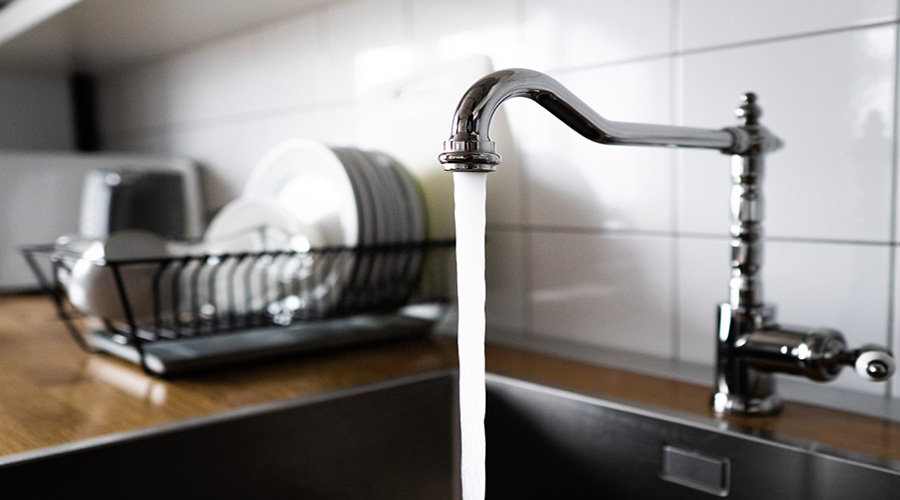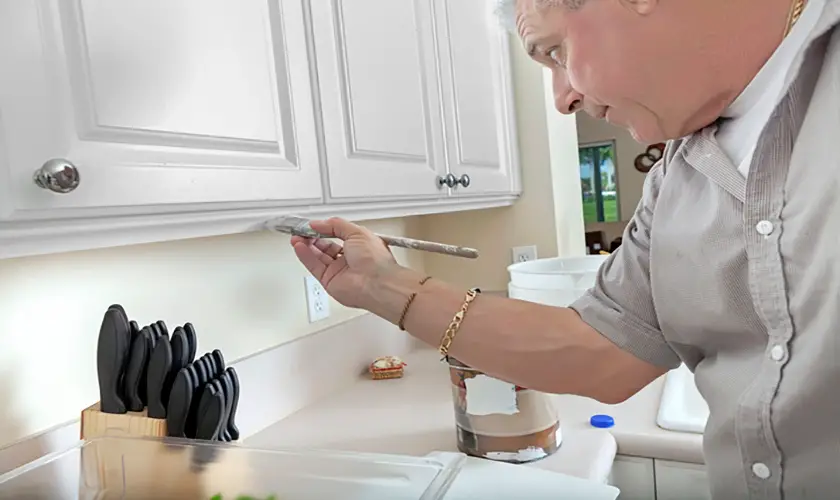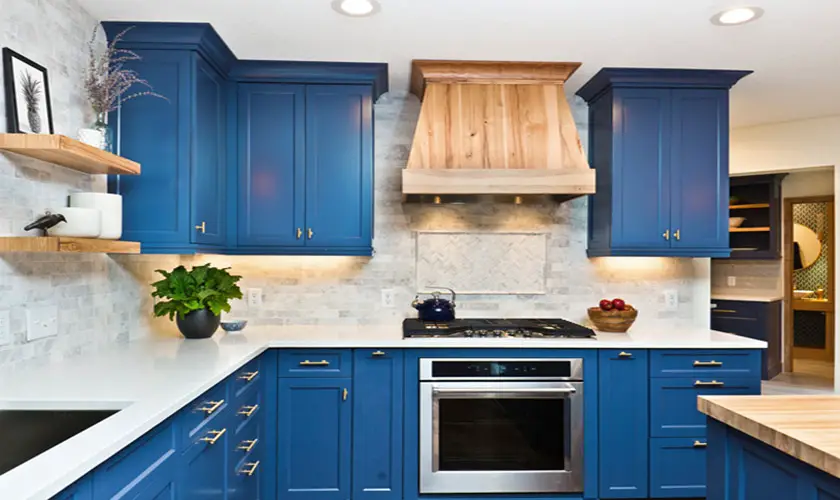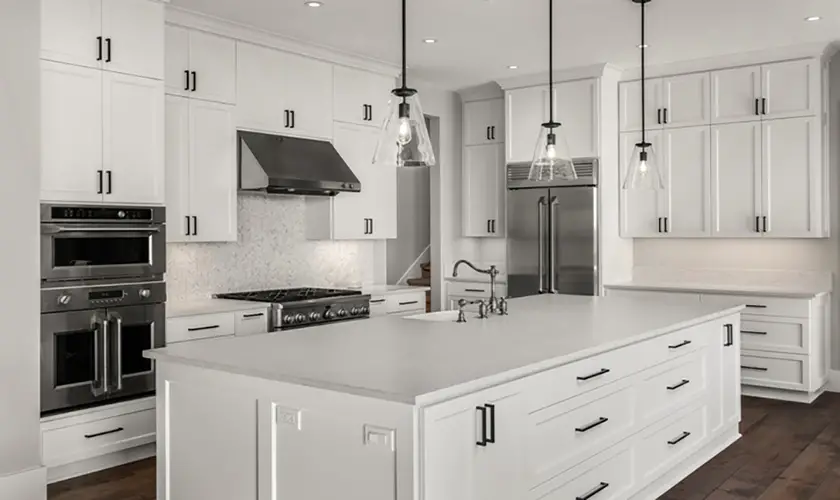
Many homeowners have complaints about how long it takes hot water to come from the water heater to the sink, tub, or shower. It’s estimated that the average household wastes 10 gallons of water daily just waiting for the water to get hot.
There are 5 options to get hot water faster to your kitchen sink, tub, or shower. These options include:
- Insulate your hot water pipes
- Install a recirculation pump
- Install a point-of-use tank water heater
- Install a point-of-use tankless water heater
- Upgrade from a tank to a tankless water heater system
Although we will focus on the ways you can get hot water faster to your kitchen sink, these methods will also work for any plumbing fixture, including bathroom sinks, tubs, and showers.
How To Get Hot Water To Your Kitchen Sink Faster
The needs of each home are unique. You should therefore explore an option that meets the needs of your home. Here are the five ways you can get hot water faster. Keep in mind you can (and should) employ several of these methods.
1. Insulate Your Water Pipes
Insulating water pipes is not just about freeze protection. People in every climate can benefit from heating their hot water pipes. Insulating the hot water pipes reduces heat loss as water moves through the pipes to your plumbing fixtures. It’ll also keep your pipes warm for long periods till the next time you require hot water.
“The simple fact is an uninsulated ¾ copper line loses anywhere from 22 to 34 BTU’s per linear foot an hour & that by properly insulating it you can drop that loss by a third or more.”
According to The Homeowners & Trades Resource Center
Even though this won’t provide instant water, it’ll reduce the time you’ll have to wait for hot water in the kitchen sink. It also reduces the energy bills.
2. Recirculating Hot Water Systems
If you turn the knob on your faucet for the traditional tank water heaters, hot water will start getting out of the faucet into the kitchen sink. But what if the hot water is already in the pipe at the point you open the faucet?
In such a case, hot water is instantly at the faucet.
The purpose of a recirculation system is to connect the farthest point in your plumbing system to the water heater using a plumbing line that functions as a dedicated loop of hot water.
Since hot water is always in circulation in the system, it will be available at the faucet immediately you open it.
The greatest benefit of such a system is that it offers an immediate supply of hot water at the kitchen sink or showerhead, thus reducing the amount of water wasted and saving on time.
A thermostat activates a water recirculation system. The thermostat will turn on your system every time the water cools below certain temperatures.
A timer can also activate the system. It activates the system when hot water is needed or when the home has people. It will save both money and utility bills.
A recirculating system could require that you make significant changes to your existing plumbing. In such a case, you can implement a demand system that works almost the same way as a recirculating system. You can also retrofit it into an existing home.
Our Pick for Water Heater Recirculation Pump
3. Point-Of-Use Tank Water Heaters
A point-of-use water heater is just as the name suggests. This system provides a heating source closer to where your shower, bathtub, or sink is found. It is mostly employed in heating water for fixtures away from your home’s tank water heater.
The point-of-use heaters are always found in areas where immediate hot water is convenient or needed. You can easily incorporate this system into your existing plumbing system.
It operates just like a whole-home tank water heater but with a smaller water tank. They vary in size from 2.5 gallons to 20 gallons. You should, therefore, wisely choose the best point-of-use tank heater based on the level of hot water demand.
This option offers hot water faster, reducing time and waste by reducing the water’s distance to reaching the sink or fixture. Instant hot water saves money, water, and time.
See our article on Tankless Water Heater Setups that Require Expansion Tanks.
Our Pick for Point of Use Tank Water Heater
4. Point-Of-Use Tankless Water Heaters
This water heater only functions when there is a need for hot water. While the tank heaters store hot water sent to your kitchen sink upon request, the tankless option starts operation when you open the hot water tap.
When you turn on your hot water tap, water moves through the pipe to the tankless heater unit, usually located directly under the sink or a nearby closet. The heater heats the water using either an electric heating element.
The capacity of tankless point-of-use units is measured in the gallons per minute (GPM) they can heat.
Most of these water heaters have a rating range of 2 gallons per minute to 2.5 gallons per minute.
Since the tankless water heater is closer to the fixture, it can instantly provide hot water. You’ll experience a delay before water from the heater reaches your target temperature.
The standard size of most tankless water heaters is about 11-inches wide, 2.75-inches thick, and 6-inches thick. It means that you can easily mount them in tight spaces.
Our Pick For Point of Use Tankless Water Heater
5. Demand Hot Water Systems
Many homeowners are moving from tank water heaters to tankless water heaters for their long-term cost-saving attributes. However, this is not the only benefit.
Unlike tank water heaters that use a gas flame or an electric heating element that operates constantly, tankless units produce hot water as needed, hence the name on-demand. As you need hot water, the tankless unit rapidly heats the water and sends it to you.
As we discussed previously, the cold water has to exit the pipe first, so on-demand does not mean instant hot water. However, once the hot water reaches the fixture, the tankless unit will supply hot water as long as you need it.
The tankless water heaters’ capacity is limited to the unit’s Gallons Per Minute (GPM) rating. Most full-size tankless water heaters will produce 5 to 10 gallons of hot water per minute. If you exceed this usage capacity, the tankless water heater won’t meet the demand.
In this case, you may need two tankless water heaters installed to meet the demand. Most households won’t need two tankless units unless you have a large family or the plumbing fixtures are spread out in your home, causing delays in hot water.
See our article on Why Would You Need Two Tankless Water Heaters.
Do All Tankless Water Heaters Offer Instant Hot Water?
With a tankless water heater, you’ll get a continuous supply of hot water. Just ensure that you don’t have many appliances and faucets that demand water simultaneously that the heater’s flow rate.
But there is no straight answer to this quiz. In a way, no, they don’t, and yes, they do. The tankless heaters will begin the process of heating water immediately after you turn on your faucet. It’s therefore for this reason that many people believe that tankless heaters offer water on demand.
However, these water heaters still face the challenges of moving the heated water to the faucet through the pipes. If you acquire a tankless heater option expecting to get hot water or a gusher every time you turn on your faucet, you’ll be disappointed.
It doesn’t imply that tankless heaters don’t offer any benefits.
If you place your tankless or tank water heater in the attic while your kitchen sink is far below it, you’ll wait for a long time to get hot water.
Why Does It Take Long To Get Instant Hot Water In The Kitchen Sink
Even though the efficiency or age of your water heater and the insulation level on your pipes might play a major role, the main reason for hot water taking long is simple:
The cold water in the pipes isn’t flushed out before the hot water gets in the faucet.
After the heated water leaves the water heater, it must go through the pipes to get to the sink. Ahead of the heated water is cold water that has settled in the pipes since you last needed hot water.
Below are the reasons why your kitchen sink isn’t getting hot, or it’s taking longer to access instant hot water:
The Distance Between Your Water Heater And The Sink
As we have seen above, the most common reason water is taking too long to heat is cold water availability in the pipes. Hot water starts flowing in the pipes as soon as you open the faucet.
However, before the hot water shows up, you must flush out the cold water. If the distance between the sink and the water heater is long, water will take longer to get there.
Take, for instance, a case where you have your water heater in your attic, and the kitchen is downstairs. Therefore, it will take less time for water in the upstairs bathroom sink to heat up than in your kitchen sink.
Therefore, you should shorten the distance between key areas such as the kitchen sink and the water heater if you want to get hot water quickly.
Water Heater Malfunction
It is a widespread occurrence with the older water heater. It doesn’t mean that it can happen in newer water heaters. If you note that water is now heating up slower compared to a few months or days ago, the problem might be the water heater.
The problems can either be major or minor. Common problems in water heaters might include blown fuses, faulty thermostats, and broken heating elements.
If you notice any of the above challenges, you should call a professional to help you out.
Hard Water
Slow water heating can also result from hard water. Hard water has minerals that could build up over the water heater. When you heat the water, there will be mineral deposits of magnesium and calcium over the heater.
If your water heater has a built-up of mineral sediments, it’ll be less efficient and will hold up less water.
Cold Temperatures
There are also effects of cold temperatures. If you live in a location that hits freezing temperatures, your water heater will have to function very efficiently to reach the perfect temperatures of between 120° F to 140° F.
In addition to this, the water temperature reduces on the way to the faucet.
The Thickness and Width Of Your Pipes
If your pipes are wider, water will flow with reduced pressure. It means that it will take a longer time for the water to get to its destination.
The thickness of your pipes also affects the delivery of hot water. Thicker pipes normally pull a lot of heat from the water, thus increasing the time it’ll take to get hot.
Even though galvanized pipes are cheaper compared to copper, they are less durable and thicker. It means that you shouldn’t use them in such scenarios.
Can You Get Hot Water Faster Using A Water Heater Booster?
You will not get hot water faster just by using a water heater booster. A water heater booster is installed on a heater directly to increase the water that the heater offers. It functions by combining the hot water from the hot water valve with the cold water from your input valve.
The standard temperature that tank heaters send hot water out is 120 degrees Fahrenheit. However, you can set it lower with a tank booster.
The ‘extra hot’ water will combine with the cold water and get 120 degrees. When hot and cold water mix, the volume of the available water will increase. It translates into more hot water before your tank runs out.
Even though the heater booster is great for longer showers, it doesn’t offer instant hot water. If you want instant water, it should either be heated near or in the pipe when it is needed.
Additional Instant Hot Water Tips
Maintain Your Water Heater Annually
If you want to increase your tankless or tank water heater’s lifespan, you should do regular maintenance. If water isn’t operating efficiently, it’ll take more time to provide the heated water you require.
For the tank heaters, which are the most common in America, you should do annual maintenance such as checking the anode rod, testing the pressure & temperature, and flushing the tank.
This way, the efficiency and safety of your tank will be guaranteed.
Read our article on water heater maintenance Water Heater Maintenance Tips to 2X Your Tanks Lifespan.
Always Consult A Qualified Plumber On Installation
The task of installing a recirculation system is always restricted to professional plumbers. The other options for accessing instant water in your kitchen sink also require technical expertise.
Therefore, you should contact a professional plumber to help you out since an improperly installed water heater could cause danger.
Conclusion
We have all experienced delays in delivering hot water, whether in the shower or kitchen sink. Whether the delay is in seconds or minutes, it’s very frustrating and consumes a lot of time.
For the above reasons, water heater experts recommend that you employ the below-proven options:
- Recirculating Systems: Develop a dedicated hot water loop that is always circulating in the system. The system should make hot water available at every point.
- Demand Systems: Employ a pump in cold and hot water lines. A press button should allow cold water back to the heater and send hot water to your kitchen faucet.
- Point-of-Use Heaters: These heaters are available in both tankless and tank versions. They can also be put very close to where hot water is required. The heaters, therefore, eliminates the burden of waiting for hot water to travel through the pipes.
Therefore, you can select any of the above options if you want to get instant hot water in your kitchen sink. However, you should contact a licensed plumber to carry out maintenance or experience some challenges. The safety of your hot water system is also important to your family.
Links:
No Waiting For Hot Water When You Take A Shower







